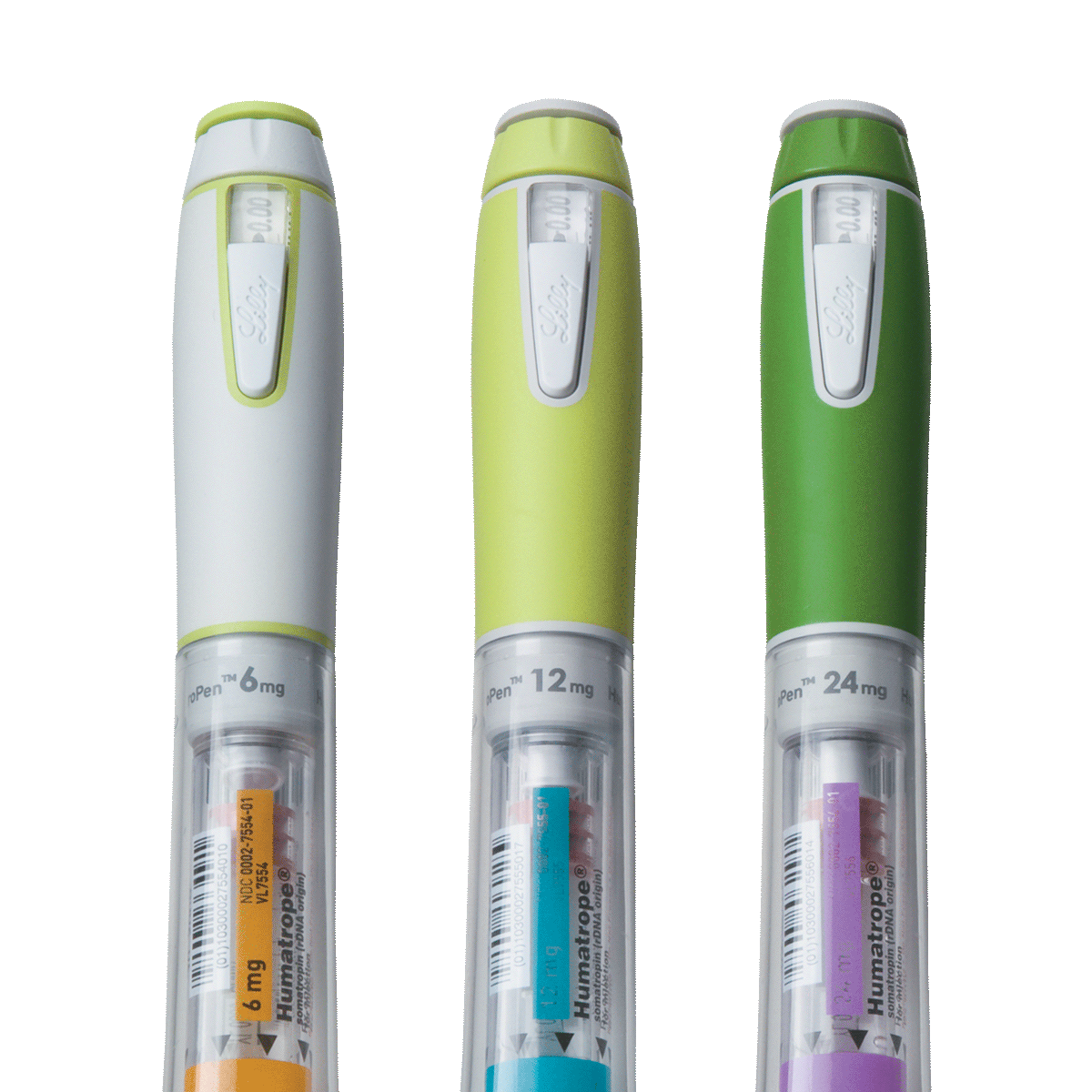- Do not take Humatrope if you are having serious complications after having open heart surgery, abdominal surgery, or serious injuries involving many body systems, or are having life-threatening breathing problems. Deaths have been reported in such cases.
- Do not use Humatrope in children with Prader-Willi syndrome who are severely obese or have a history of blocked upper airways or other severe breathing problems, or sleep apnea. Deaths have been reported in such cases. Humatrope is not approved for the treatment of patients with Prader-Willi syndrome.
- Do not use Humatrope if you have active cancer. Growth hormone deficiency can be an early sign of some tumors in the brain or pituitary gland. The presence of these types of tumors should be ruled out by your doctor before you start Humatrope.
- Serious allergic reactions have been reported with Humatrope. Humatrope is contraindicated if you know you have allergies to growth hormone or any of its ingredients. Tell your doctor if you have an allergic reaction. Do not mix Humatrope with the supplied diluent if you are allergic to metacresol or glycerin.
- Your doctor should check your blood sugar regularly while you are taking Humatrope, especially if you have diabetes, pre-diabetes, or risk factors for diabetes. New cases of type 2 diabetes have been reported in patients taking Humatrope.
- Tell your doctor if you have any visual changes accompanied by headache, nausea, and/or vomiting while taking Humatrope. This may be a sign of increased pressure in the brain.
- Adults may retain water during Humatrope treatment. This may be brief and may increase with higher doses of Humatrope.
- If you have hypoadrenalism and are on glucocorticoid replacement therapy, your doctor may increase your dosage when you initiate growth hormone treatment.
- Your doctor should test your thyroid function periodically during Humatrope therapy. Thyroid hormone treatment may need to be started or adjusted.
- Fracture in the ball of the hip joint can occur in children who have endocrine problems and in children who have rapid growth. Any child taking Humatrope who develops a limp or complains of hip or knee pain should be seen by a doctor to check for this.
- Progression of curvature of the spine (scoliosis) can occur in children who have rapid growth. Humatrope has not been shown to increase the occurrence of this condition. If the child has scoliosis, the doctor should carefully monitor the progression of the scoliosis during Humatrope treatment.
- Cases of pancreatitis (inflammation of the pancreas) have been reported rarely in children and adults receiving growth hormone. Consult a doctor if you develop abdominal pain while taking Humatrope.
- You should rotate your injection sites to avoid breakdown of skin and fat. Seek prompt medical attention for any allergic reaction you experience to the injection of Humatrope.
Who should not take Humatrope?
Humatrope should not be used by:
- People with serious complications after having open heart surgery, abdominal surgery, serious injuries involving many body systems, or with life-threatening breathing problems
- Children with Prader-Willi syndrome who are severely obese or have a history of severe breathing problems
- People with active cancer
- People who have had an allergic reaction to growth hormone
- People with diabetic disease of the retina (the lining in the back of the eyeball)
- Children who have closed growth plates in their bones
What should I tell my doctor before taking Humatrope?
Tell your doctor about all of your prescription and over the counter drugs, including cyclosporine, hormone replacement therapy, insulin or other diabetes medications, drugs containing steroids, or drugs for seizures. These medications may need to be adjusted while taking Humatrope.
What are the possible side effects of Humatrope?
Common side effects reported in adults and children taking Humatrope include upper respiratory infection, fever, throat inflammation, headache, inner ear inflammation, swelling, joint pain, unusual skin sensations, muscle pain, carpal tunnel syndrome, leg swelling, flu syndrome, low thyroid, and high blood sugar.
You are encouraged to report negative side effects of prescription drugs to the Food and Drug Administration (FDA). Visit
www.fda.gov/medwatch
or call 1-800-FDA-1088.
How should I store Humatrope?
Humatrope must be kept refrigerated (36° to 46°F [2° to 8°C]) before and after it is mixed. Do not freeze. Once Humatrope has been mixed and is in liquid form, cartridges must be used within 28 days and vials must be used within 14 days. Throw away any unused Humatrope in a cartridge after 28 days and in a vial after 14 days. Before giving an injection, check the manufacturer’s expiration date on the cartridge or vial. Do not use the cartridge or vial if it has expired.
Humatrope is available by prescription only.
HG CON ISI 14SEP2022
See
Full Prescribing Information,
Instructions for Use - Cartridge
and
Instructions for Use – Vial.






